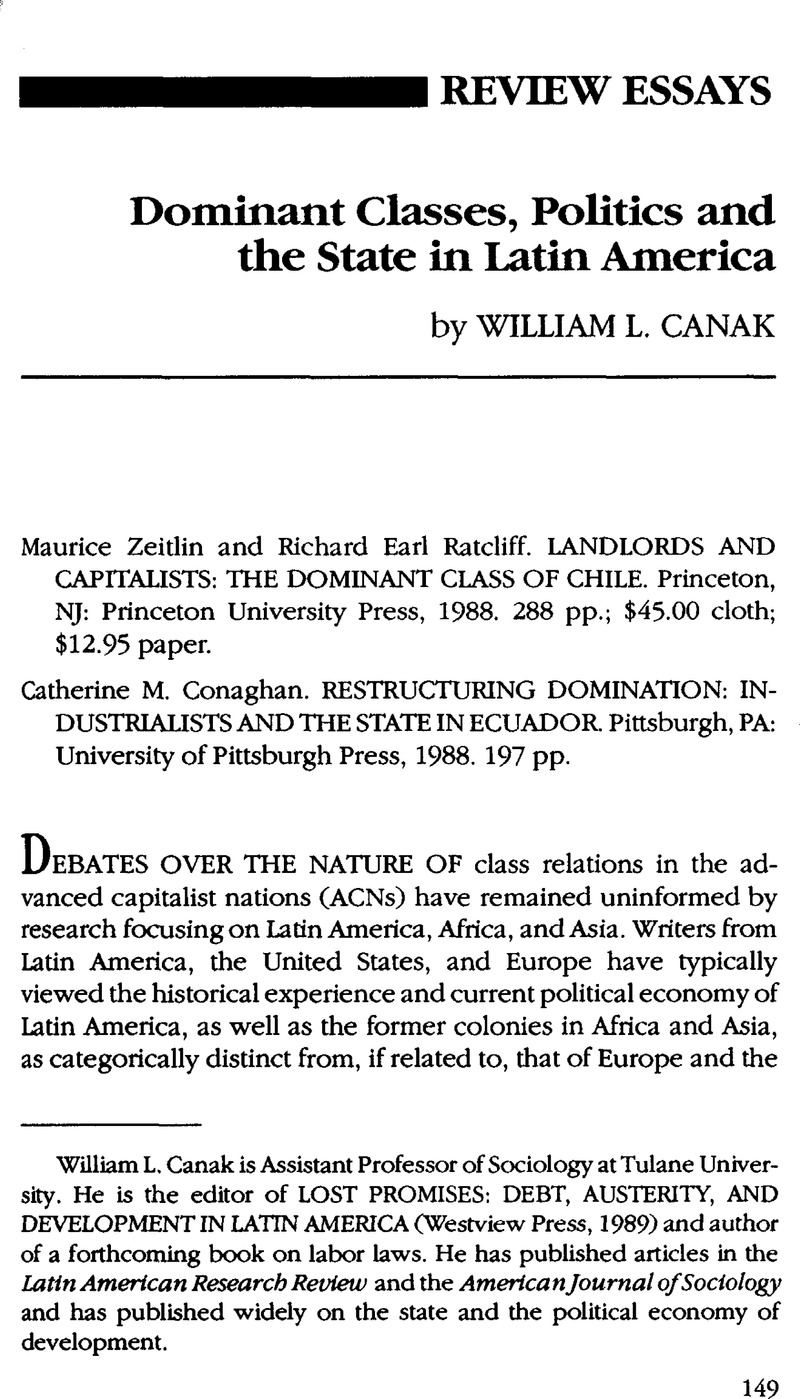No CrossRef data available.
Article contents
Dominant Classes, Politics and the State in Latin America
Published online by Cambridge University Press: 02 January 2018
Abstract
An abstract is not available for this content so a preview has been provided. Please use the Get access link above for information on how to access this content.

- Type
- Review Essays
- Information
- Journal of Interamerican Studies and World Affairs , Volume 33 , Issue 1 , Spring 1991 , pp. 149 - 160
- Copyright
- Copyright © University of Miami 1991
References
Berle, A. and Means, G. (1932) The Modern Corporation and Private Property.
New York, NY: Macmillan and Co.Google Scholar
Bornschier, V. and Chase-Dunn, C. (1985) Transnational Corporations and Underdevelopment.
New York, NY: Praeger Publishers.Google Scholar
Cardoso, F. and Faletto, E. (1979) Dependency and Development in Latin America.
Berkeley, CA: University of California Press.Google Scholar
De Janvry, A. (1981) The Agrarian Question.
Baltimore, MD: The Johns Hopkins University Press.Google Scholar
Giddens, A. (1973) The Class Structure of the Advanced Societies.
London, England: Hutchinson University.Google Scholar
LIM, M. (1981) Ownership and Control of the One Hundred Largest Corporations in Malaysia.
New York, NY: Oxford University Press.Google Scholar
Lipset, S. and Solari, A. (1967) Elites in Latin America.
New York, NY: Oxford University Press.Google Scholar
Mintz, B. and Schwartz, M. (1985) The Power Structure of American Business.
Chicago, IL: The University of Chicago Press.Google Scholar
Pike, F. (1962) Chile and the United States.
Notre Dame, IN: Notre Dame University Press.Google Scholar
Skocpol, T. (1979) States and Social Revolutions.
New York, NY: Cambridge University Press.Google Scholar
Skocpol, T. (1985) “Bringing the State Back In: Strategies of Analysis in Current Research,” pp. 3–37 in Peter Evans, B. , Rueschemeyer, Dietrich, and Skocpol, Theda (eds.) Bringing the State Back In. New York, NY: Cambridge University Press.Google Scholar
Wiarda, H. (1987) Latin America at the Crossroads: Debt, Development, and the Future.
Boulder, CO: Westview Press.Google Scholar
Wiarda, H. (ed.) (1980) The Continuing Struggle for Democracy in Latin America.
Boulder, CO: Westview Press.Google Scholar
Zeitlin, M. (1985) The Civil Wars in Chile (or The Bourgeois Revolutions That Never Were).
Princeton, NJ: Princeton University Press.Google Scholar




